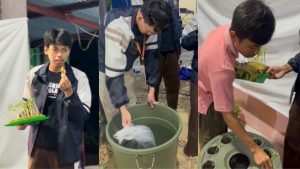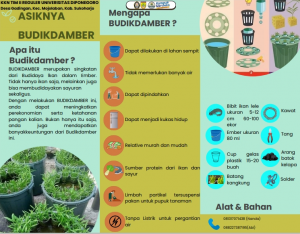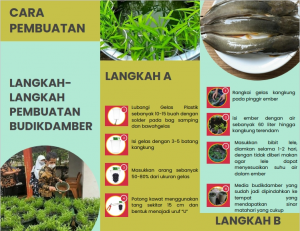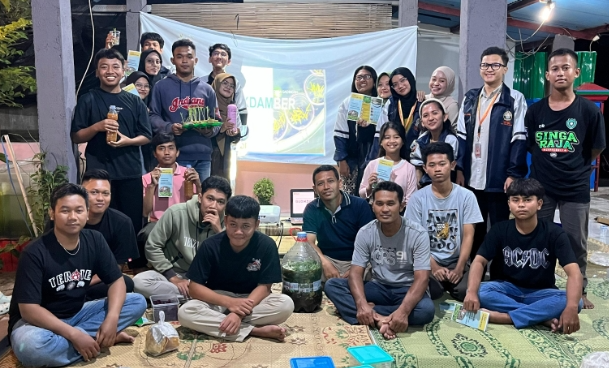Gadingan Village, Mojolaban Subdistrict, Sukoharjo Regency, August 1, 2024 – UNDIP Field Study and Community Service held a multidisciplinary work program in Gadingan Village, Mojolaban Subdistrict, Sukoharjo Regency, on Thursday, August 1, 2024. This program was implemented as an innovation in the field of aquaculture and agriculture at the same time. This program aims to increase public understanding of the benefits of fish farming and contemporary plants without using land.
As we know, fish farming activities certainly require a very large area of land for maintenance ponds. However, on Thursday, August 1, 2024 at 19.30 in one of the residents’ houses, UNDIP Field Study and Community Service have successfully carried out a multidisciplinary work program “BUDIKDAMBER”.
BUDIKDAMBER is Cultivation in a Bucket. Not only fish, but you can also grow vegetables at the same time. What are the advantages of BUDIKDAMBER?, of course, it does not require a large area of land and does not cost a lot of money due to its relatively easy maintenance. This activity certainly also helps the community in the supply of food security for everyday as a source of animal protein, the resulting production is also high and the relatively short maintenance time is one of the advantages of BUDIKDAMBER activities.
Not all types of fish can be cultivated in a narrow container but one type of FISH that can be used in BUDIKDAMBER activities is catfish, gabus fish, catfish and tilapia. Types of VEGETABLES that can be planted are mustard greens, pakcoy, and kale.

“Why BUDIKDAMBER? Because BUDIKDAMBER have the potential to conduct business activities that can later generate profits.” Said UNDIP Field Study and Community Service during a demonstration and understanding of BUDIKDAMBER.


The first step in the process of making BUDIKDAMBER is seeding the plants using. The type of plant that is sown on rockwool media is water spinach. Rockwool itself, is a lightweight mineral fiber made from rock base material, which is designed as a sound dampening material, insulation against heat, and commonly used as a hydroponic growing medium. Plant seeding is done and takes about 4-5 days. Prepare a plastic cup then perforate the sides and bottom of the glass using solder. It is intended that later the water in the maintenance pond can wet the rockwool, if the rockwool is dry the plants will not get water supply and can cause drought. Next, fill the glass with rockwool that has been overgrown by kale.
The second step is to prepare a maintenance bucket and put a hole in the lid of the bucket as a place to put the plastic cup. Fill the bucket with water, the water level up to the bottom of the plastic cup containing kale. Enter the catfish seeds, let stand for 1-2 days and not fed so that the catfish can adapt to the water temperature. The finished BUDIKDAMBER media is moved to a place that gets enough sunlight to stimulate the growth of kale plants.
Tips for keeping fish in BUDIKDAMBER are by paying attention to feeding, namely in the morning and evening, then water quality. Water change can be done if the fish’s appetite has decreased, the water smells bad and the fish is hanging (head above and tail below). Replace the water by suctioning the dirt at the bottom of the bucket with a hose (penyiponan) done every 7-10 days, or you can replace it using clean water, leaving at least 30% of the previous maintenance water. For plants, make sure that they are always exposed to sunlight and the humidity in the rockwool is maintained. The time needed for fish maintenance is 2-3 months, while the harvesting of the first kale vegetables can be done 14-21 days after planting the kale.
In BUDIKDAMBER, we hope that the community can carry out cultivation activities even though they have limited land. The results of this activity can also be used for daily needs or can be traded which will generate profit from the sale.


Recent Comments